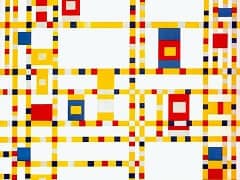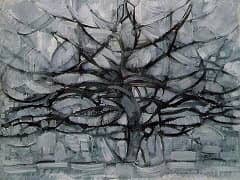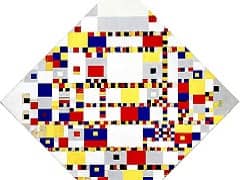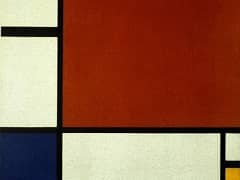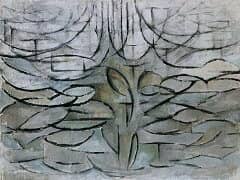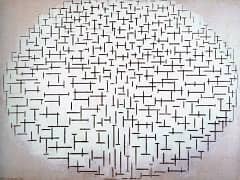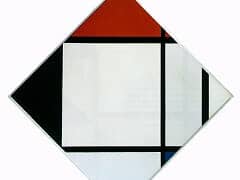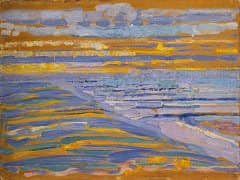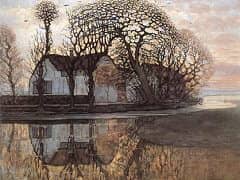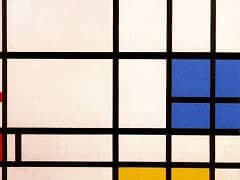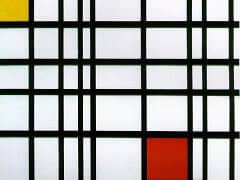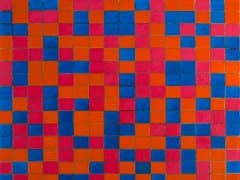Oval Composition, 1913-14 by Piet Mondrian
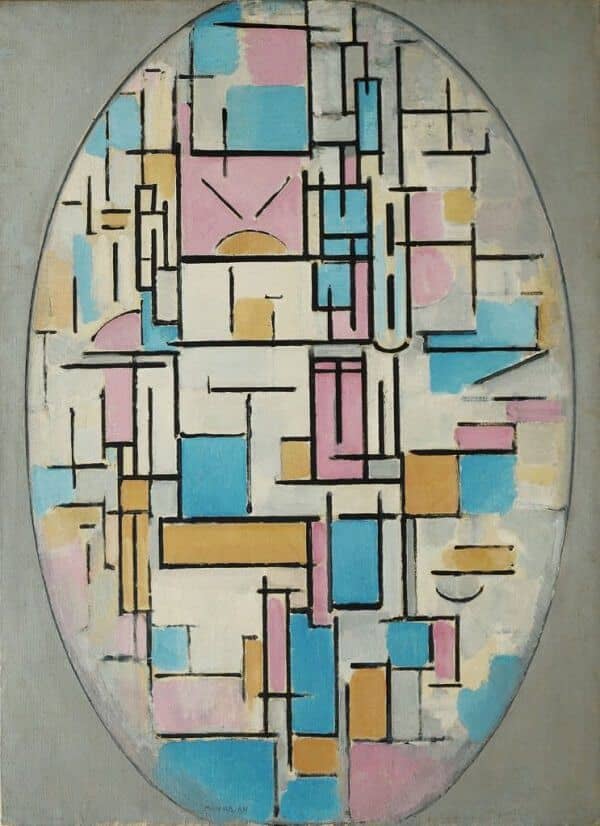
The total change in color scheme is the noteworthy aspect of this composition, which was executed hardly six months later than the Oval Composition (Trees) and is likewise inscribed in an oval. The 1913 canvas is in nuances of ocher, yellow, and brown, with a few touches of blue-gray as a contrast; the work reproduced here is painted in a triad of colors which in the last analysis reduces to the three primaries, red, yellow, blue. In evaluating this change, it is well to keep in mind that the original masters of cubism, Pablo Picasso and Georges Braque, had just brought color back into their paintings in 1913, reintroducing it in analogy with their experiments with pieces of colored paper in their collages. This second or synthetic phase of cubism, in which the painterly treatment and free brush stroke had disappeared, had a strong influence on Mondrian, as can be seen by a work like the 1913/14 Oval Composition.
Along with the difference in the color scheme there is a change in the conception of the over-all structure: the painting is put together from motifs that are larger in scale than those of the canvas of the preceding year. Moreover, horizontal and vertical lines predominate in these "building blocks" of the painting, whereas in the 1913 Oval Composition (Trees) diagonals and curves still played an important role. There has thus been a notable increase in rigor in the few months separating the two paintings. What the two have in common is above all their liberation from the force of gravity: in both, the bottom of the oval is left relatively unworked, so that the forms above it seem to float, as it were.
It should not be forgotten, however, that it was just in these years that Picasso and Braque were putting letters of the alphabet into their compositions, as two-dimensional facts and as a link with reality. Here, too, Mondrian follows their example.

